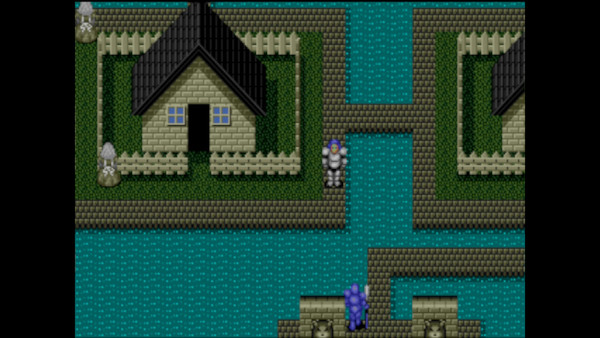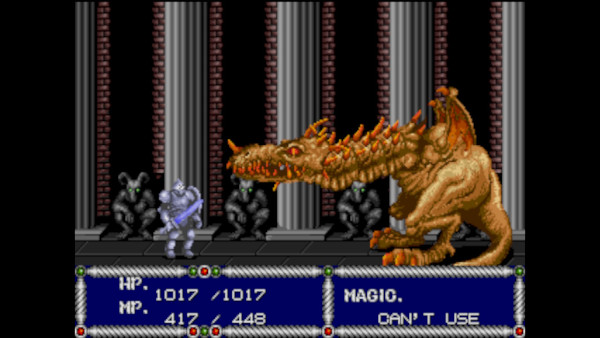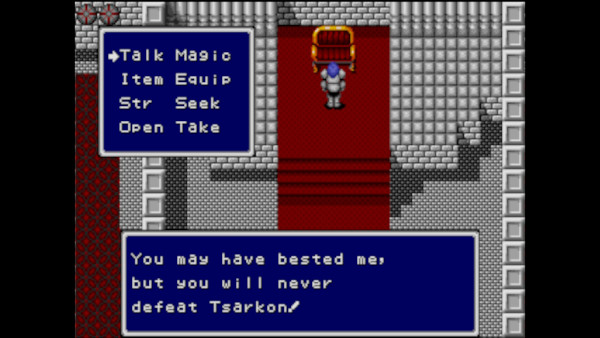One of the things which Sega's Genesis RPGs do so well is minimalistic storytelling. You see the destroyed town of Excalabria-- only something like two lines of dialog involved-- then make your way to the moment the entire game has built you up for: entrance into Cartahena.
You are greeted by this song: welcome to Pyongyang, biznatch.

So far there is zero dialog, other than the guard saying your pass grants you entry to their "peaceful" town. You can see that the people are turned to stone-- but there is no exposition. You don't need any.
You enter the first house. There is a man inside! You talk to him, and have two sentences of dialog, which tells you everything you need to know.

In a modern RPG, this would have been a fifteen hour quest line, with this huge 3D modeled town, with side quests, crafting, and you name it. In an era-equivalent Square or Enix game, or even in Sega's own "Phantasy Star IV", there would have been five or ten minutes of dialog, endlessly repeating itself, and adding nothing in the process.
But in one of Sega's RPGs? They represent a town of millions of people, with a dissident hiding in a discrete location, with four houses and two sentences. The player knows exactly what's going on, and like a good novel the imagination fills in the gaps.
This game design concept continues when you enter the castle, wherein you find a single minister:

After two sentences, he attacks you:

And after that, we get a single sentence, whereupon the minister disappears:

We go back to the dissident, and there are two sentences more:

And that's it! A brilliant segment of story telling, boiled down to its bare essence, letting the player's imagination do its thing. Sega's period RPGs are practically the only entries in the entire JRPG genre to do exposition "right": through gameplay, art, and ludonarrative.